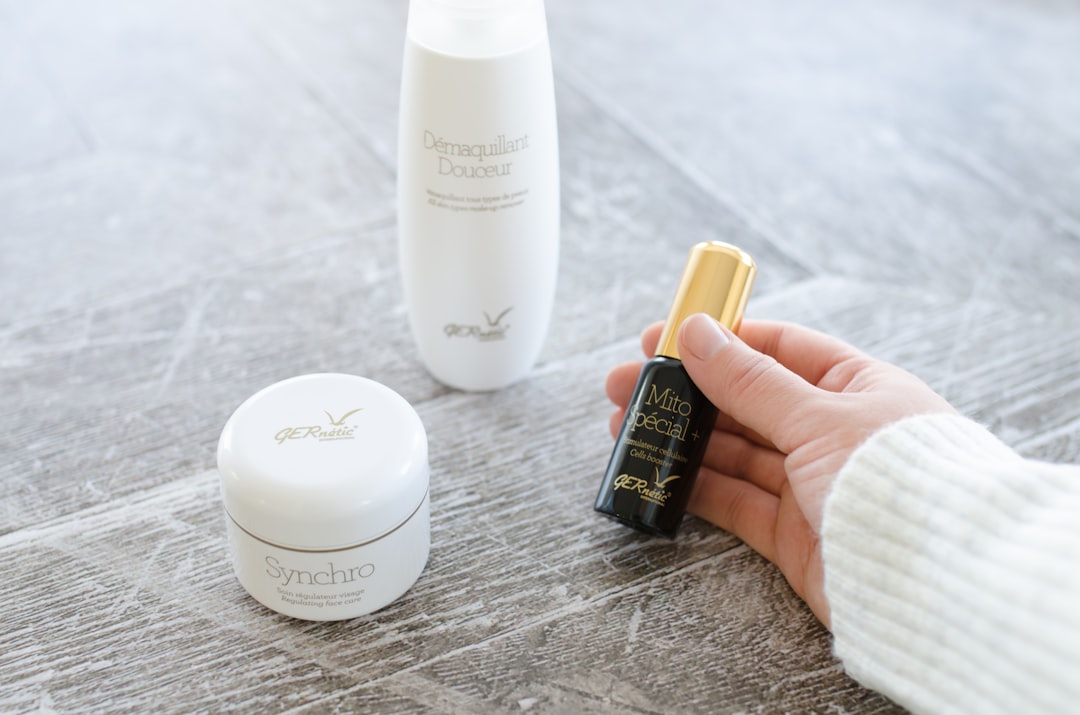Laser hair removal is a popular cosmetic procedure that utilizes concentrated beams of light to target and eliminate unwanted hair. The technology behind this treatment is based on the principle of selective photothermolysis, where the laser energy is absorbed by the pigment in the hair follicles. This process effectively damages the follicles, inhibiting future hair growth.
As you consider this option, it’s essential to understand how it works and what to expect during the treatment. The procedure is typically performed in a clinical setting by a trained professional. During your session, you will wear protective eyewear to shield your eyes from the laser light.
The practitioner will then apply a cooling gel or device to your skin to minimize discomfort. Depending on the size of the area being treated, each session can last anywhere from a few minutes to over an hour. While many people experience a reduction in hair growth after just a few sessions, complete results often require multiple treatments spaced several weeks apart.
Understanding these fundamentals can help you make an informed decision about whether laser hair removal is right for you.
Key Takeaways
- Laser hair removal targets hair follicles to reduce hair growth
- Shave the treatment area before the session to ensure the laser targets the hair follicles
- Expect some redness and swelling after treatment, which should subside within a few hours
- Moisturize the treated area and avoid sun exposure to prevent complications
- Follow up with maintenance treatments as recommended by your provider for long-term results
Preparing for Laser Hair Removal Treatment
Consultation and Planning
During this consultation, you can also ask any questions you may have about the procedure, including potential risks and expected outcomes.
Pre-Treatment Preparations
In the weeks leading up to your treatment, it’s crucial to avoid sun exposure and tanning beds, as tanned skin can increase the risk of complications. You should also refrain from waxing or plucking hair in the treatment area for at least four weeks prior to your appointment. Shaving is usually recommended instead, as it leaves the hair follicle intact while removing the hair above the skin’s surface.
Additional Precautions
Additionally, you may be advised to avoid certain medications or skincare products that can increase sensitivity or affect your skin’s response to the laser.
Post-Treatment Care: What to Expect
After your laser hair removal session, it’s normal to experience some redness and swelling in the treated area. This reaction is similar to a mild sunburn and typically subsides within a few hours to a couple of days. You may also notice some slight itching or discomfort, which can be alleviated with cool compresses or over-the-counter pain relievers if necessary.
Understanding these immediate post-treatment effects can help you manage your expectations and prepare for any temporary discomfort. In the days following your treatment, it’s essential to keep an eye on how your skin reacts. You might see some hair shedding in the treated area as the follicles are damaged and hair begins to fall out.
This process can take up to two weeks, and it’s important not to pick at or scratch the area, as this can lead to irritation or infection. Instead, allow your skin to heal naturally while following any aftercare instructions provided by your practitioner.
Essential Tips for Post-Laser Hair Removal Care
| Post-Laser Hair Removal Care Tips | Description |
|---|---|
| 1. Avoid sun exposure | Avoid direct sun exposure and use sunscreen to protect the treated area. |
| 2. Keep the area clean | Gently clean the treated area with mild soap and water to prevent infection. |
| 3. Moisturize the skin | Apply a gentle moisturizer to keep the skin hydrated and promote healing. |
| 4. Avoid hot baths and saunas | Avoid hot baths, saunas, and excessive sweating to prevent irritation. |
| 5. Follow aftercare instructions | Follow the specific aftercare instructions provided by your laser hair removal technician. |
Taking care of your skin after laser hair removal is crucial for achieving optimal results and minimizing side effects. One of the most important tips is to keep the treated area clean and moisturized. Use a gentle cleanser and avoid harsh scrubs or exfoliants for at least a week post-treatment.
Applying a soothing moisturizer can help alleviate dryness and promote healing, ensuring that your skin remains healthy and comfortable. Additionally, it’s wise to avoid tight clothing that may rub against the treated area, as this can cause irritation. Loose-fitting garments allow your skin to breathe and reduce friction, which is especially important in sensitive areas.
If you experience any unusual symptoms such as excessive swelling, blistering, or prolonged redness, don’t hesitate to contact your practitioner for advice. They can provide guidance on how to manage these issues effectively.
Avoiding Sun Exposure and Heat
One of the most critical aspects of post-laser hair removal care is avoiding sun exposure and heat for a specified period. Your skin will be more sensitive after treatment, making it more susceptible to sunburn and pigmentation changes. It’s advisable to stay out of direct sunlight for at least two weeks following your session.
If you must be outdoors, wearing broad-spectrum sunscreen with an SPF of 30 or higher is essential to protect your skin from harmful UV rays. In addition to sun exposure, you should also avoid activities that generate heat in the treated area, such as hot showers, saunas, and intense workouts. Heat can exacerbate inflammation and increase discomfort, so it’s best to stick with cooler temperatures during your recovery period.
By taking these precautions seriously, you can help ensure that your skin heals properly and that you achieve the best possible results from your laser hair removal treatment.
Proper Skincare Routine after Laser Hair Removal
Establishing a proper skincare routine after laser hair removal is vital for maintaining healthy skin and enhancing the results of your treatment. Start by using gentle products that are free from fragrances and harsh chemicals. Look for soothing ingredients like aloe vera or chamomile that can help calm any irritation in the treated area.
Avoid using retinoids or exfoliating acids for at least a week post-treatment, as these can further irritate sensitive skin. Hydration is also key in your post-treatment skincare regimen. Drinking plenty of water helps keep your skin hydrated from within, while applying a nourishing moisturizer can create a protective barrier on the surface.
If you notice any dryness or flakiness in the treated area, consider using a hydrating serum or oil specifically designed for sensitive skin.
Managing Discomfort and Side Effects
While most individuals tolerate laser hair removal well, some may experience discomfort or side effects during their recovery period. Common sensations include redness, swelling, and mild itching in the treated area. To manage these symptoms effectively, consider applying cool compresses or ice packs wrapped in a cloth for short intervals.
This can help soothe inflammation and provide relief from discomfort. If you find that over-the-counter pain relievers like ibuprofen or acetaminophen are necessary, consult with your practitioner about appropriate dosages and timing. In rare cases, individuals may experience more severe side effects such as blistering or changes in pigmentation.
If you notice any unusual symptoms that persist or worsen over time, reach out to your practitioner immediately for guidance on how to address these concerns.
Long-Term Maintenance and Follow-Up Treatments
Achieving long-lasting results from laser hair removal often requires ongoing maintenance and follow-up treatments.
These follow-ups help ensure that any remaining hair follicles are effectively targeted before they have a chance to grow back.
In addition to regular treatments, maintaining a healthy lifestyle can also contribute to the longevity of your results. Staying hydrated, eating a balanced diet rich in vitamins and minerals, and avoiding excessive sun exposure will all support your skin’s health over time. By committing to both follow-up treatments and healthy habits, you can enjoy smooth skin without the hassle of frequent shaving or waxing for years to come.
In conclusion, understanding laser hair removal involves more than just knowing how it works; it encompasses preparation, post-treatment care, and long-term maintenance strategies as well. By following these guidelines and staying informed about what to expect throughout the process, you can make confident decisions about your skincare journey while achieving optimal results from this innovative treatment option.
After undergoing laser hair removal treatment at Elase, it is important to follow proper aftercare instructions to ensure optimal results. One related article that provides helpful tips for post-treatment care is this article on fashion and home care. It discusses the importance of moisturizing, avoiding sun exposure, and using gentle skincare products to maintain smooth and hair-free skin. By following these guidelines, clients can prolong the effects of their laser hair removal treatment and achieve long-lasting results.
FAQs
What is laser hair removal aftercare?
Laser hair removal aftercare refers to the steps and precautions that should be taken after undergoing a laser hair removal treatment. This includes caring for the treated area to ensure proper healing and to minimize any potential side effects.
What are some common aftercare tips for laser hair removal?
Common aftercare tips for laser hair removal include avoiding sun exposure, using gentle skincare products, avoiding hot showers and saunas, and keeping the treated area clean and moisturized. It is also important to follow any specific instructions provided by the treatment provider.
How long does it take for the skin to heal after laser hair removal?
The skin typically takes a few days to a week to heal after laser hair removal. During this time, it is important to keep the treated area clean and moisturized, and to avoid any activities or products that may irritate the skin.
Are there any potential side effects of laser hair removal aftercare?
Some potential side effects of laser hair removal aftercare may include redness, swelling, and mild discomfort in the treated area. These side effects are usually temporary and can be managed with proper aftercare.
When can I resume normal activities after laser hair removal?
It is generally safe to resume normal activities immediately after laser hair removal, but it is important to avoid sun exposure and to follow any specific aftercare instructions provided by the treatment provider.








